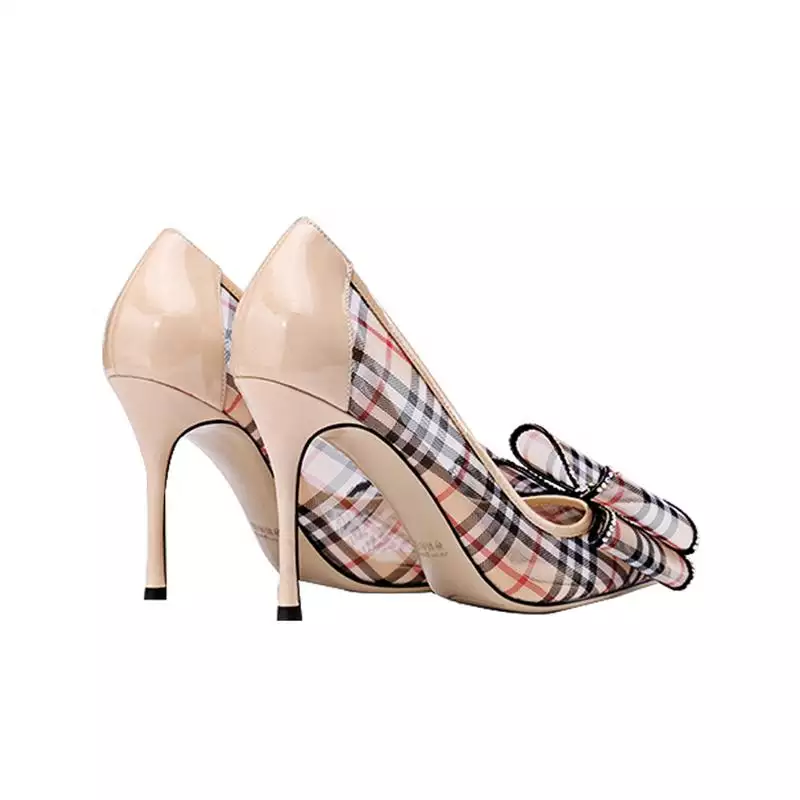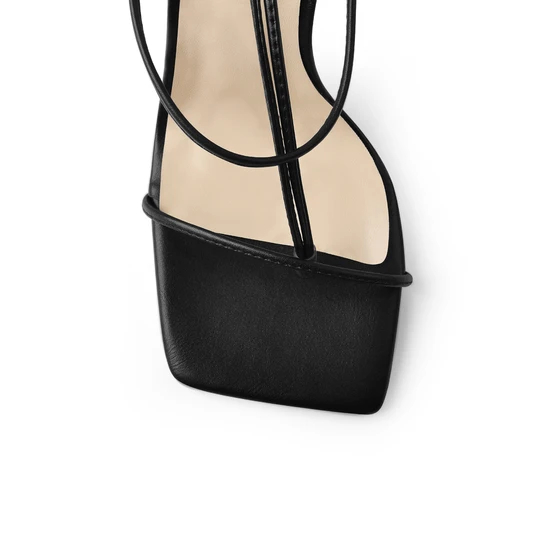By providing your information, you agree to our Terms of Use and our Privacy Policy. We use vendors that may also process your information to help provide our services. This site is protected by reCAPTCHA Enterprise and the Google Privacy Policy and Terms of Service apply.
2021 marks FN’s fourth year of presenting its Black History Month Spotlight series, which shines a light on some of the remarkable executives, entrepreneurs and designers in the shoe industry. As part of our ongoing commitment to champion diversity across all areas of the footwear business, we will continue to amplify the voices and stories of Black movers and shakers who are worthy to be recognized all year round. Custom Running Shoes Online

Take a look at Michael Grey Sandal Factory’s recent Instagram posts, and you won’t find images of staged product or manicured models showcasing the brand’s sandals. Instead, you’ll see videos of founder Michael Grey hard at work, sanding down an outsole or meticulously cutting a snakeskin fabric to fit onto the upper of one of his custom-made styles.
Related Stories Converse Celebrates Black History Month With ‘Black Joy’ Collection Vanessa Bryant Shares Unreleased Nike Kobe 6 on Instagram
Grey, who got his start working for major footwear companies like Roberto Cavalli, Steve Madden and Vince Camuto, knows how important authenticity is to consumers in today’s market.
“Corporate entities train you to show the shoe dolled up,” he said. “And while there’s always a place for that sense of glamour, I think people are getting a little weary of it. They want more clarity as to who is creating the product and desire to build a connection to the brand. And that’s really what my brand is all about.”
Although his company still has a fairly small social media following, this commitment to transparency, Grey says, has played a huge role in growing the business. In fact, he claims sales of his handmade flat sandals and custom Birkenstocks have tripled each year since he started his sandal line in 2016.
Both design ideas, Grey says, were a result of him noticing two voids in the market.
His inspiration to create handmade footwear can be traced back to the time he spent in his first job out of college. (Grey graduated from the Savannah College of Art and Design in 2007 with a degree in product design). W orking as a designer and developer for shoe manufacturer Simple Factory, he fell in love with the art of shoemaking while traveling between the company’s domestic and international factories . This exposure eventually led him to pursue a master’s program in hand-making footwear at famed Italian fashion institute Polimoda in Florence, Italy.
“I always loved seeing the process of products being made,” Grey said. “That’s how it really connected for me to combine the design component with the making component, and at that point, I thought I could really start something for myself.”
Grey’s handmade shoe business didn’t come immediately, though — nor did it start with sandals. Once graduating from the program, Grey completed an internship at Roberto Cavalli and moved back to the U.S. to design shoes for fashion brands like Jessica Simpson and Vince Camuto — all while running his own wholesale shoe business on the side. Still working a full-time corporate job in 2015, Grey transitioned from the wholesale shoe business to operating his own line of handmade dress shoes, including oxfords, heels and flats, out of a factory in the Williamsburg neighborhood of Brooklyn, New York. According to Grey, producing handmade dress shoes in volume quickly proved to be challenging and time consuming.
“I had a few friends that had just gone to Italy and told me, ‘I got these sandals made for 70 euros while I was on the beach relaxing,’” Grey recalled. “While I was at my wit’s end, I thought this sounded great. At the same time, I didn’t really love sandals then and had gotten so far into making the complicated bespoke styles, that I thought the idea of making sandals was too simple for me.”
With that, he closed his factory and took a few months hiatus to think about his next move. Ultimately, however, he couldn’t shake the idea of creating handmade sandals — not only because the silhouettes seemed easier to produce en masse, but also because this market, he came to realize, wasn’t fully being tapped in the U.S.
Grey then embarked on a 10-day trip across Italy, touring handmade sandal shops in Carpi, Napoli and other regions across the country to glean as much information as he could about the art of sandal-making.
After returning home with his international samples, Grey created the components for eight minimalist sandal styles — all inspired by the pairs he picked up in Italy — and set up shop at a foldout table in Williamsburg. As in the stores he encountered in Italy, Grey offered custom fittings for shoppers who visited his table. Customers would then choose their preferred strap style and buckle color and return an hour later to pick up their unique pairs, which Grey assembled on-site. According to Grey, the table was an instant hit with passersby.
“Even from the first day, I had many orders,” he said. “The idea was to make something really classic — not to chase trends because they turn over so fast. From my 12-year-long corporate design background, I was very aware that certain sandals always come back in style; for example the one band sandal with an ankle strap or thick cross-band silhouette. I wanted to focus on those and give people a tailored experience, which was not really being offered to the mass public.”
Today, he offers 12 flat sandal styles through the Michael Grey Sandal Factory website, where he now does most of his orders. The flat sandals comprise the brand’s Classic and Exotics collections, the latter which incorporates calf hair and snakeskin into its designs. Pairs retail for $130 and $165.
It wasn’t until the pandemic, however, that a majority of Grey’s sales went online. After a stint designing women’s shoes for Pyer Moss’ fall ’18 collection, and overwhelmed by the constant travel required of his job, Grey left his position at Steve Madden and began solely focusing on his own business in 2017. Still yearning to maintain the personal aspect of his foldout table venture, he decided to create a mobile sandal shop. In what Grey describes as a “food truck, but with sandals,” the shop would travel around New York outfitting customers. When it didn’t pan out for Grey to expand this model to beach towns like Miami (which are more restrictive when it comes to selling open air products), Grey began selling his shoes at boutique pop-ups, trunk shows and bridal showers.
He didn’t stop there, though. While his original styles seemed to resonate with women, he desired to create a sandal that men would want to wear, too. (According to Grey, the flat leather sandal silhouette has appeal among men in other countries like Europe, South America and Africa, while flip-flops and comfort-driven slides are popular among American male consumers).
Instead of creating a new style altogether, however, Grey saw Birkenstock’s Arizona sandal as the perfect canvas for customization — another design craft Grey had been eager to try his hand at. In 2017, he launched his first pair of customizable Birkenstocks. While sales of these styles continue to grow each year, Grey says they did most notably in 2020, as the comfort-driven silhouette experienced a huge resurgence during the height of the pandemic.
“I knew a few other shoemakers who made a pair or two of custom Birkenstocks,” he said, “but they didn’t really stick with it, and went on to custom sneakers since that business is huge. Birkenstock is such an iconic brand, and with its supportive, unisex offerings, I knew it would resonate with consumers.”
Depending on the size, width and footbed type a customer requests, Grey buys entire Birkenstock pairs or footbeds directly from one of Birkenstock’s sales representatives for North America. He then deconstructs the shoes and creates his own outsoles and straps, for the latter using fine leathers sourced from a leather supplier in Queens, New York (which also provides hides for designer brands like Coach). On the website, customers have the option to choose between smooth and textured leather, reptile skin or calf hair uppers done in a variety of neutral to bright colors. Grey also offers limited-edition patterns to choose from, including florals designs as well as zebra and cheetah prints.
And since last summer, he’s teamed up with a handful of burgeoning artists — including Brooklyn-based muralist Sophie Roach and Canadian abstract artist Claire Desjardins — on finishes inspired by their artworks. Grey says 13 more artist collaborations are slated for 2021.
Uniquely, both the upper and lower straps, as well as the buckle finish, are customizable. Each pair of custom Birkenstocks retails for $240.
Grey rarely restocks finishes outside of his core colors, creating a truly one-of-a-kind experience for shoppers.
This year, he will also be releasing three original footbed designs, including a leather wrapped version of the Birkenstock footbed for an edgier take on the chunky sandal.
Like his homegrown approach to advertising, Grey keeps his team tight knit. Although he said sales soared for the brand last summer, Grey opted to tap just a few of his shoemaker friends to help produce pairs. He currently has just four full-time employees.
“Following the example of other successful companies [he names Warby Parker as one], I liked the idea that you can have high productivity with a small amount of people,” Grey said. “This validated my choice to stick with sandals and not a more complicated construction.”
Grey and his team now operate out of a small factory in Savannah, Georgia, where Grey relocated with his wife and two children last September. Due to increased demand for his offerings (he also completes wholesale orders of his flat leather sandals for independent boutiques across the country), the brand works with a factory in Midtown Manhattan as well. This factory, Grey says, handles the prep of components for his styles — including creating the straps for his flat leather sandals, as well as the outsoles for both his flat leather sandals and custom Birkenstocks. Grey continues to assemble both styles himself and make the straps of the Birkenstocks, as that feature is customizable.
Still, Grey hopes to eventually go back to his roots and create handmade dress shoes once again. And while he’s currently a footwear professor at the Savannah College of Art and Design, he also desires to open a retail space in Savannah once the world returns to a semblance of normal times.
He envisions this space as a factory-like setting, where people can “touch the leathers, see which colors suit their skin tone,” he says, and of course, watch their pairs being made.
By providing your information, you agree to our Terms of Use and our Privacy Policy. We use vendors that may also process your information to help provide our services. This site is protected by reCAPTCHA Enterprise and the Google Privacy Policy and Terms of Service apply.

Custom Leather Riding Boots By providing your information, you agree to our Terms of Use and our Privacy Policy. We use vendors that may also process your information to help provide our services. This site is protected by reCAPTCHA Enterprise and the Google Privacy Policy and Terms of Service apply.